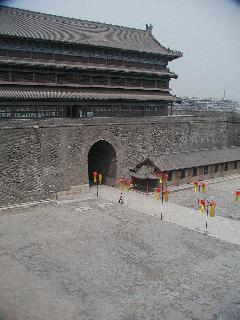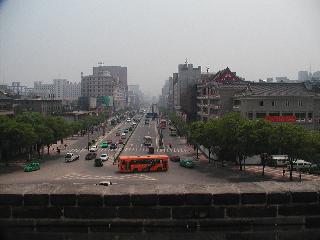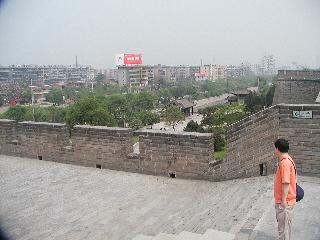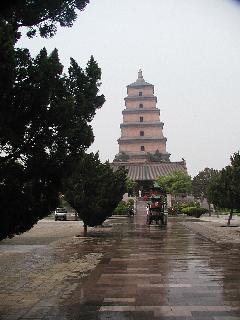
North Gate
As in Beijing, the architecture here has all things earthly in rectangular form. The ancient city of Xi'an was surrounded by a huge wall, a neat rectangular structure nine miles in circumference, and pierced by four gates, each in one of the cardinal directions. Here we see the North gate, through which we came. The ceremonial standards in the assembly grounds of the rampart show the emperor's color of golden yellow.

Inward Look
From the high wall we can look into the heart of ancient Xi'an (that is to say, the part within the walls) though as you can see, much of it is quite a bit more recent. In the distance, you might be able to make out the bell tower, kept at the center of the fortified city. It was rung in the morning, marking the start of the day. Near it to the west is the drum tower, struck at night to mark the end.

Outward Look
As you can see, Xi'an has grown considerably since the wall was built. It's also surrounded by a moat, now used as a city recreational area. Eddie Law, the local guide for Xi'an seen here, indicates that the wall is the largest intact wall in China.

Wild Goose Pagoda
South of the inner city is this pagoda, modeled after one found in India. It was built to contain the original Buddhist scrolls, and the temple surrounding it is still in active use.
Xi'an is on the edge of the desert, and as such is quite dusty; to keep the dust under control, streets (and in this case, the grounds of the temple) are sprayed periodically to keep things under control... for a while.